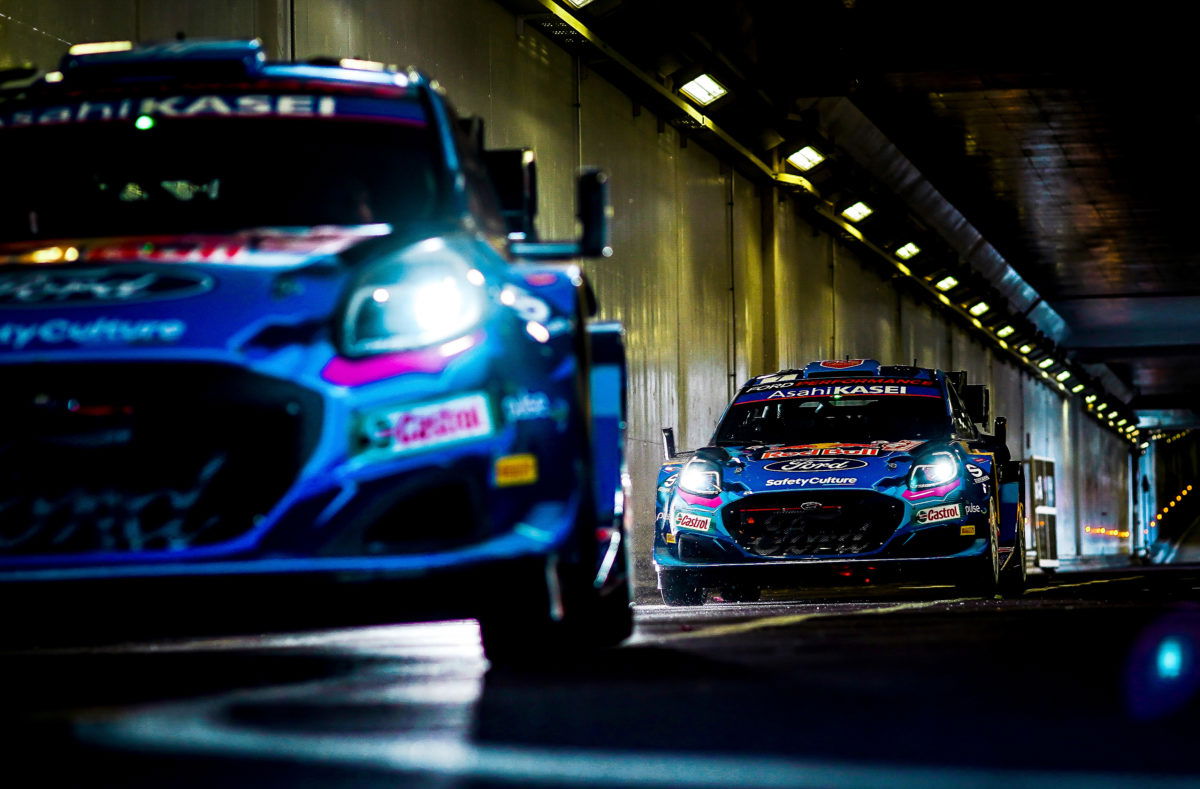

From next month’s Rally de Portugal onwards – or April 1, 2023 to be precise – every top-tier World Rally Championship car from M-Sport and Hyundai will be fitted with a soundbox that emits an audible tone at speeds lower than 18.6mph (29.9km/h). It is believed Toyota trialled the technology at last month’s Rally Sweden.
Similar devices exist on road-going cars that run on an electric battery during reverse parking manoeuvres, as per European Union directive. The idea is to alert pedestrians to the vehicle’s presence as there is no noise from the engine to do this. In the same fashion, for the greener-focused ‘Rally1’ WRC regulations, the move is not so much about increasing performance, but rather making cars safer to be around when moving in urban settings.
The rules governing these on Rally1 cars is just as specific and follows a meeting of the FIA’s World Motor Sport Council last Friday. Positioned one metre from the ground, the sound module must produce a minimum of 80dB of noise for a two-metre radius at the front and rear of the vehicle in both forward and reverse gears. Above 18.6mph, it switches off.
Richard Millener – M-Sport Ford’s Team Principal – believes the newest add-on is “a sensible and necessary requirement”.
He said: “When the cars are in full electric mode, they are silent and when they are in a busy service park with lots of people – team members, other drivers, marshals, etc – it is very easy to miss seeing a car coming towards you as you are used to hearing the noise of the car which simply is not there.
“We need to be sensible and safe, so adding a sound module will help for service areas to be a safer place,” he added.
Other safety measures that exist on Rally1 cars for the benefit of spectators, marshals and team mechanics are three LED lights. One is positioned at the top of the windscreen and one on either B-pillar and these tell people whether the car is safe to touch in the event of an accident by showing a green light for okay, or a red flashing light accompanied by an alarm sound for danger.
The World Rally Championship is well-known for innovation and technological breakthroughs, with many of these – over time – filtering down onto the factory floors of car assembly plants.
Arguably the single most important change to have graced the series is Audi’s all-wheel-drive system. Better known as ‘Quattro’, it changed how engineers approach the development of everything from tyres to suspension set-up. Overnight, it opened up a wealth of possibilities and is regarded by many people as one of the Championship’s single most defining chapters.
Fast forward to 2022 and the Championship ushered in an entirely new rule set to closer align it with the road cars of today. Chief amongst these was the introduction of an energy recovery system that scoops kinetic energy that would otherwise be lost as heat under braking, before relaying this to an onboard battery where it is stored.
This can then either be used on stages for brief bursts of extra power, on liaison sections that takes competitors through built-up residential areas for emission-free driving, or when they are moving in and around the service park to minimise noise.
The package consists of a 100kW electric unit developed and supplied by Compact Dynamics that is paired to a 1.6-litre turbo petrol motor that was carried over from the previous World Rally Car era. Combined, the two methods of propulsion develop a colossal 500bhp (373kW).
Stan Sport is the only way to watch every round of WRC. Click here for all the action streaming ad-free, live and on demand.





















Discussion about this post